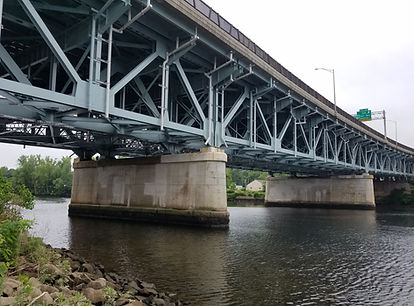
Monitoring of Erosion, Scour and All-Weather Precipitation
Built in the USA Since 1975
Scour and Erosion Monitoring Products
Stream bed, bank, levee, and bridge scour has been the cause of disasters throughout the world. Scouring occurs as fast-moving stream water flows around a bridge support structure, through a burn scar, or a weakened levee or bank. State and County DOTs depend on accurate instrumentation for monitoring bridges, levees, or burn scars to report potential erosion or scour and alert the proper authorities in the case an event occurs.
ETI offers a variety of erosion and scour measurement techniques because each system poses the challenge of a unique environment with a specific set of measurement requirements. Regardless of the technique used, if scour is detected, ETI's system will provide automated notification on a 24/7 basis to alert responsible safety personnel.




Bridge Monitor (BM-20) Master Unit
The Master Unit typically includes a data logger, communications module (cell, satellite or radio) stream water level, tilt sensor, battery and solar panel. Data from the Master Unit is received and stored on the Bridge Monitor Cloud Server for access and display.
Active Sonar (AS-3)
Sonar measures streambed elevation using a rapid series of soundings. If scour has caused the elevation of the streambed to decrease significantly, an alert condition is initiated.
Sliding Magnetic Collar (SMC-3)
A cylindrical collar with built-in magnets is free to slide down a stainless steel support mast as the streambed erodes providing the elevation of the streambed within the scour area.
Float-out Transmitter (FLT-3)
Float-out devices are buried at scour-prone locations near the bridge. Should scour occur sufficiently to release the device, the buoyant float-out rises to the water surface, activating an internal transmitter.
Vibration Strand (VS-3)
A series of accelerometers housed inside a steel reinforced hose at 1-foot intervals is augured vertically into the streambed to depths up to 80 feet. As scour occurs the vibration sensors become active and notification is provided in real-time.
Video Cameras
Video cameras are used to monitor the real-time conditions of the stream, structural elements of the bridge and vehicular traffic.